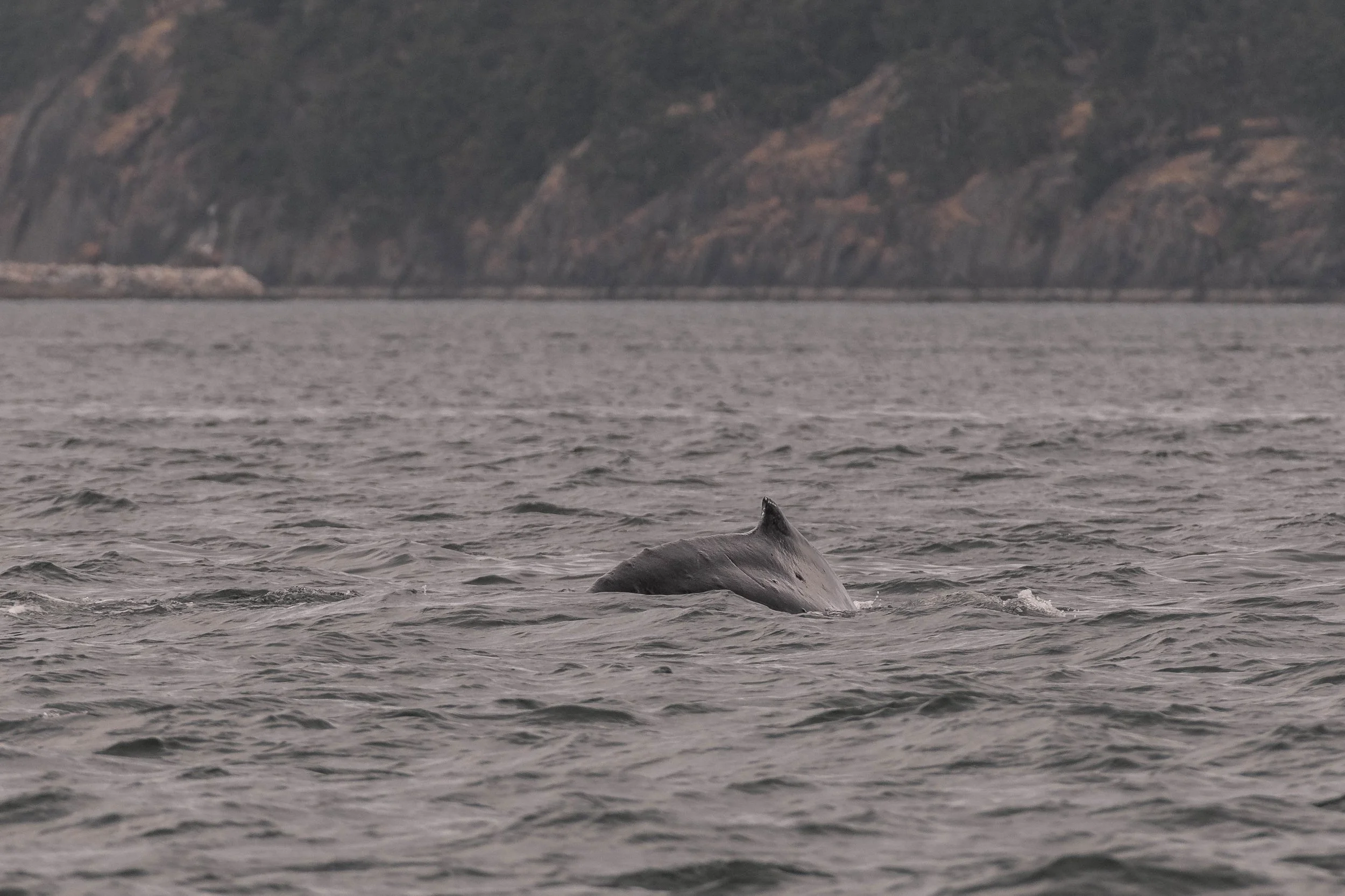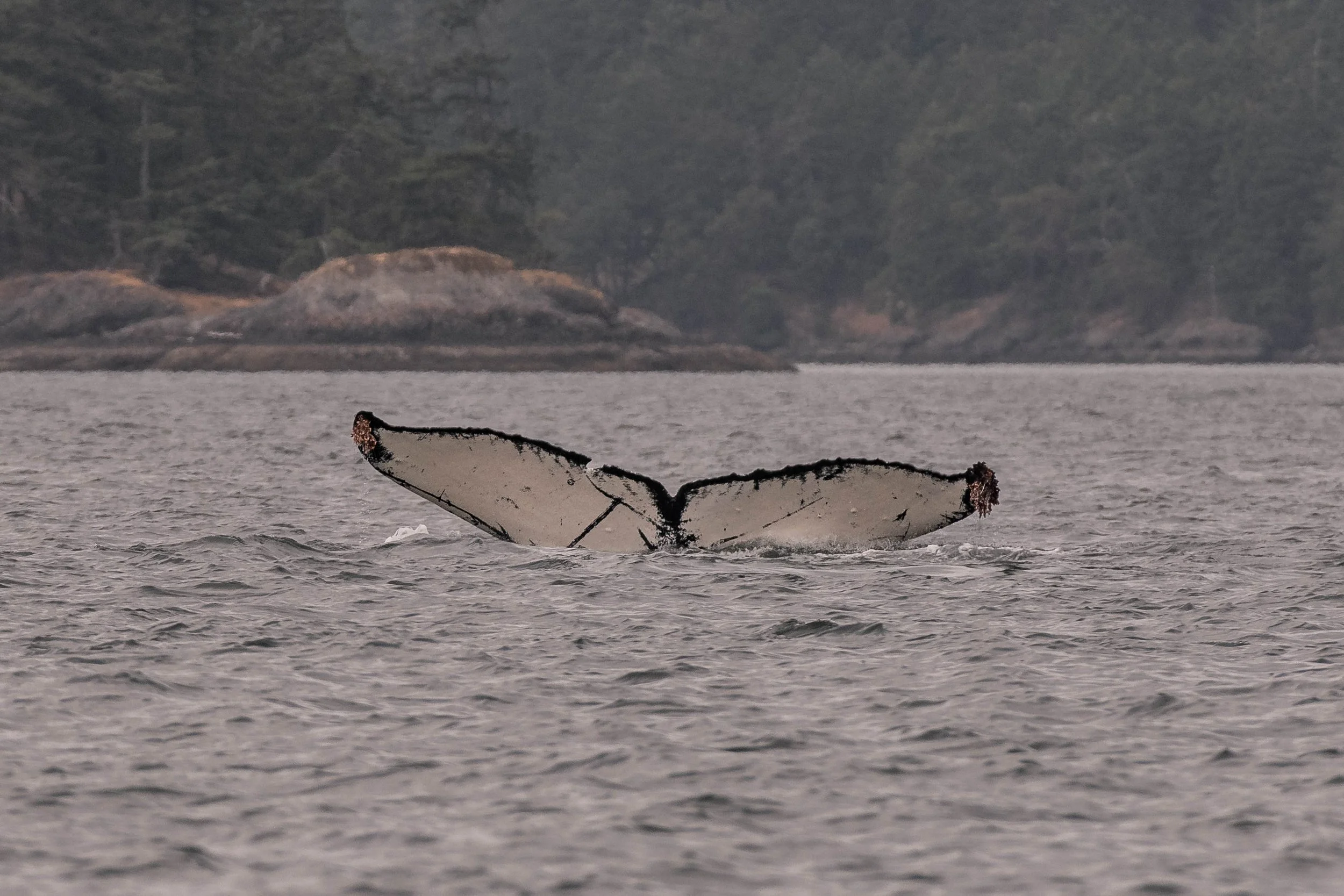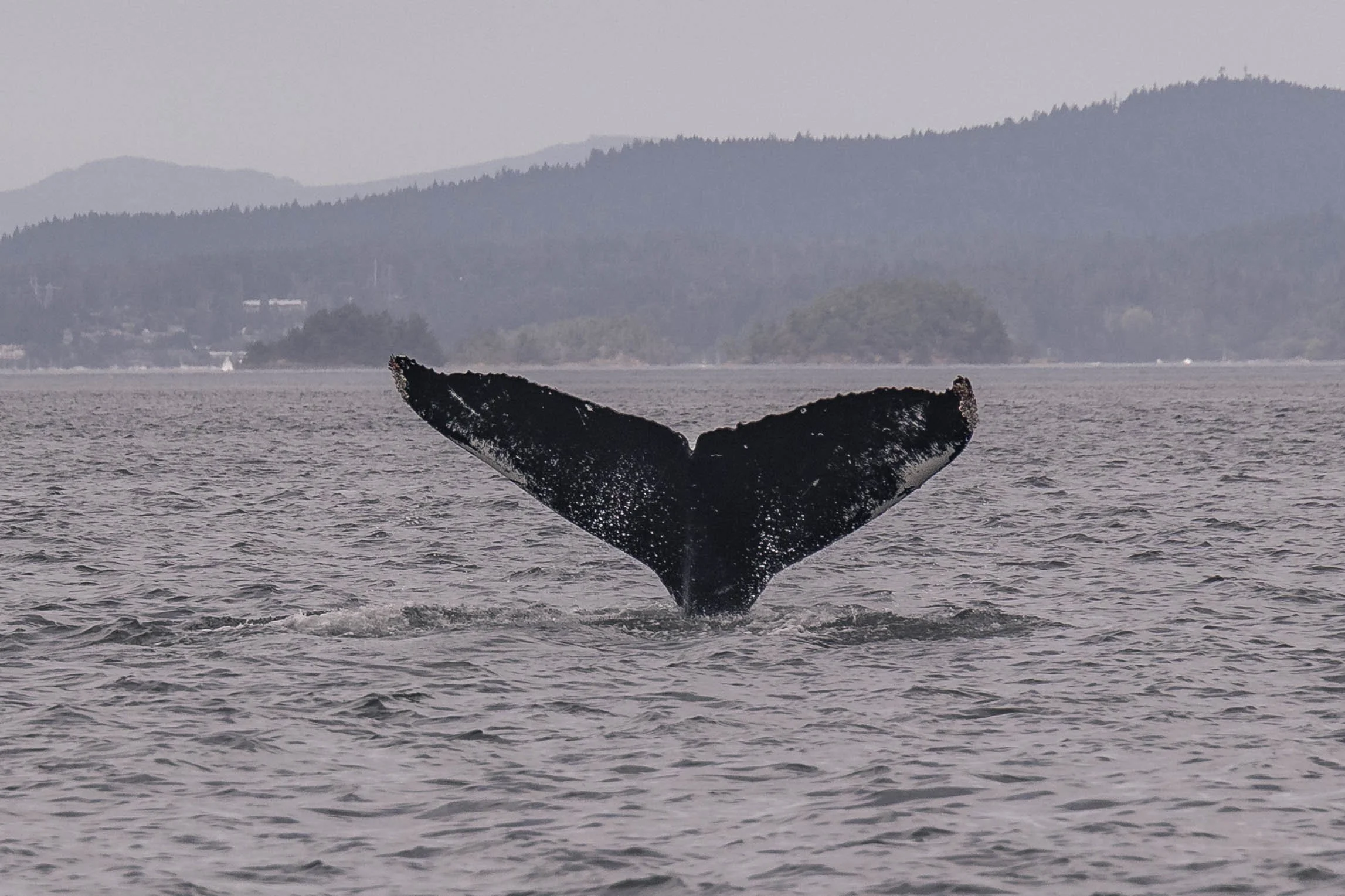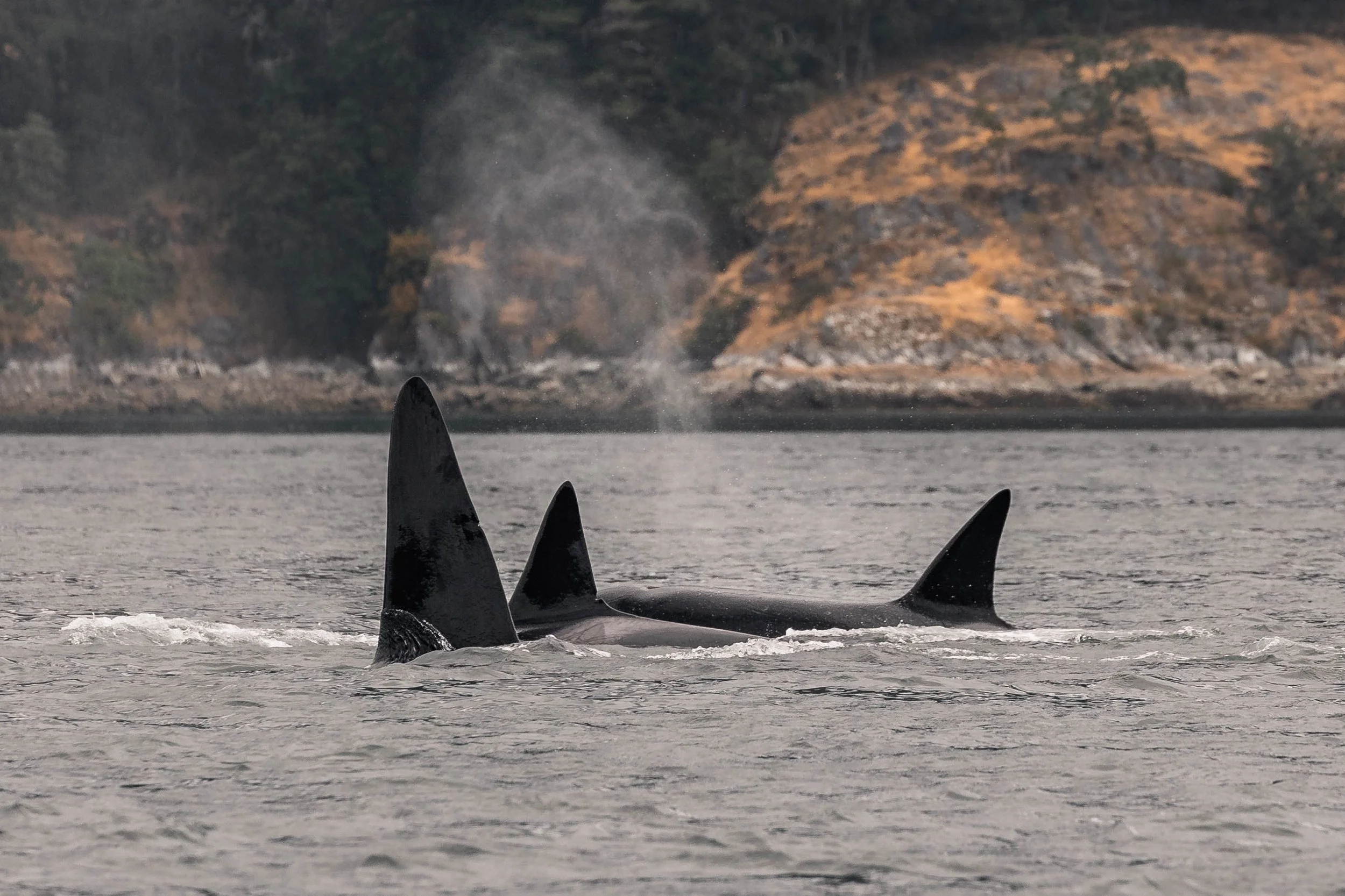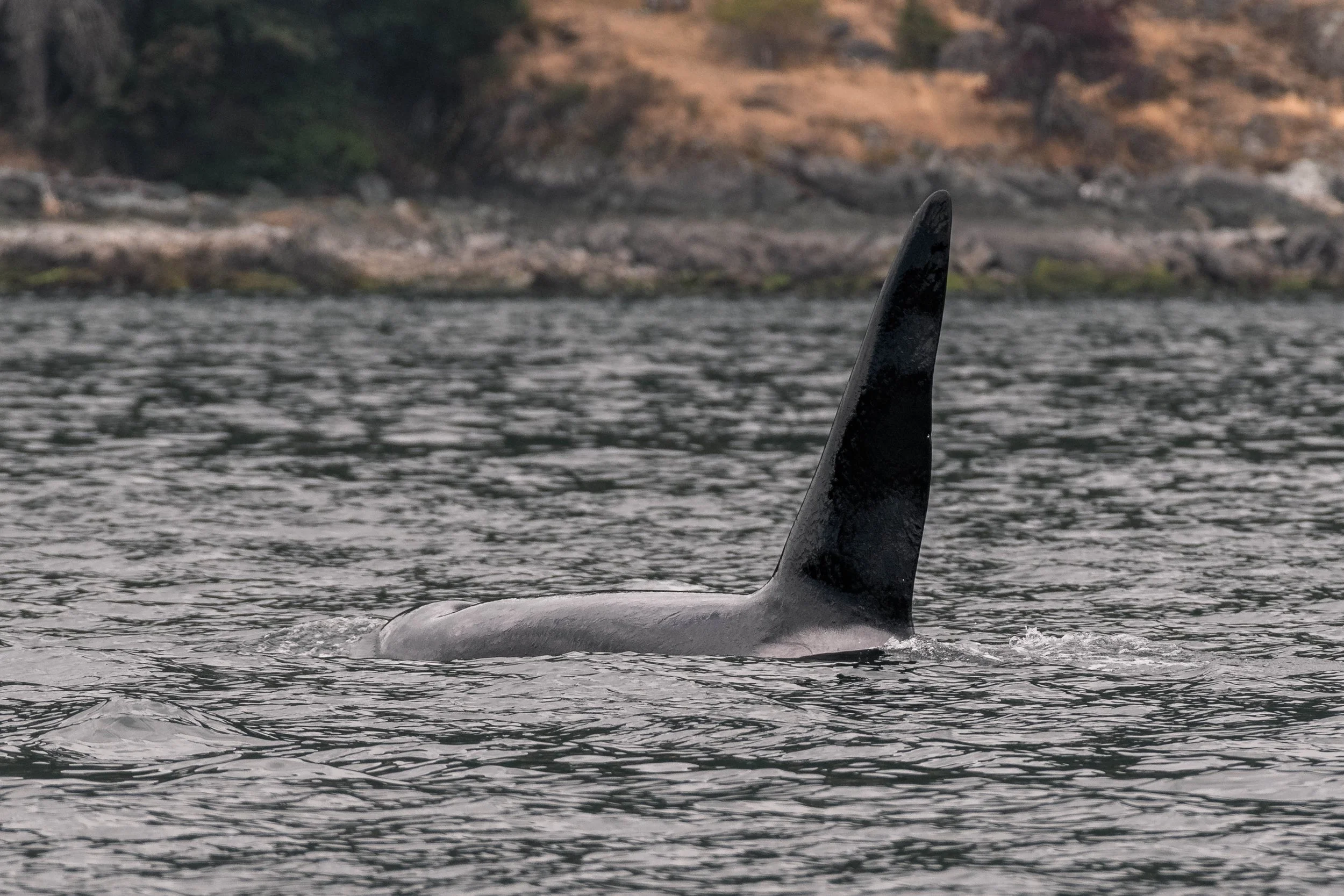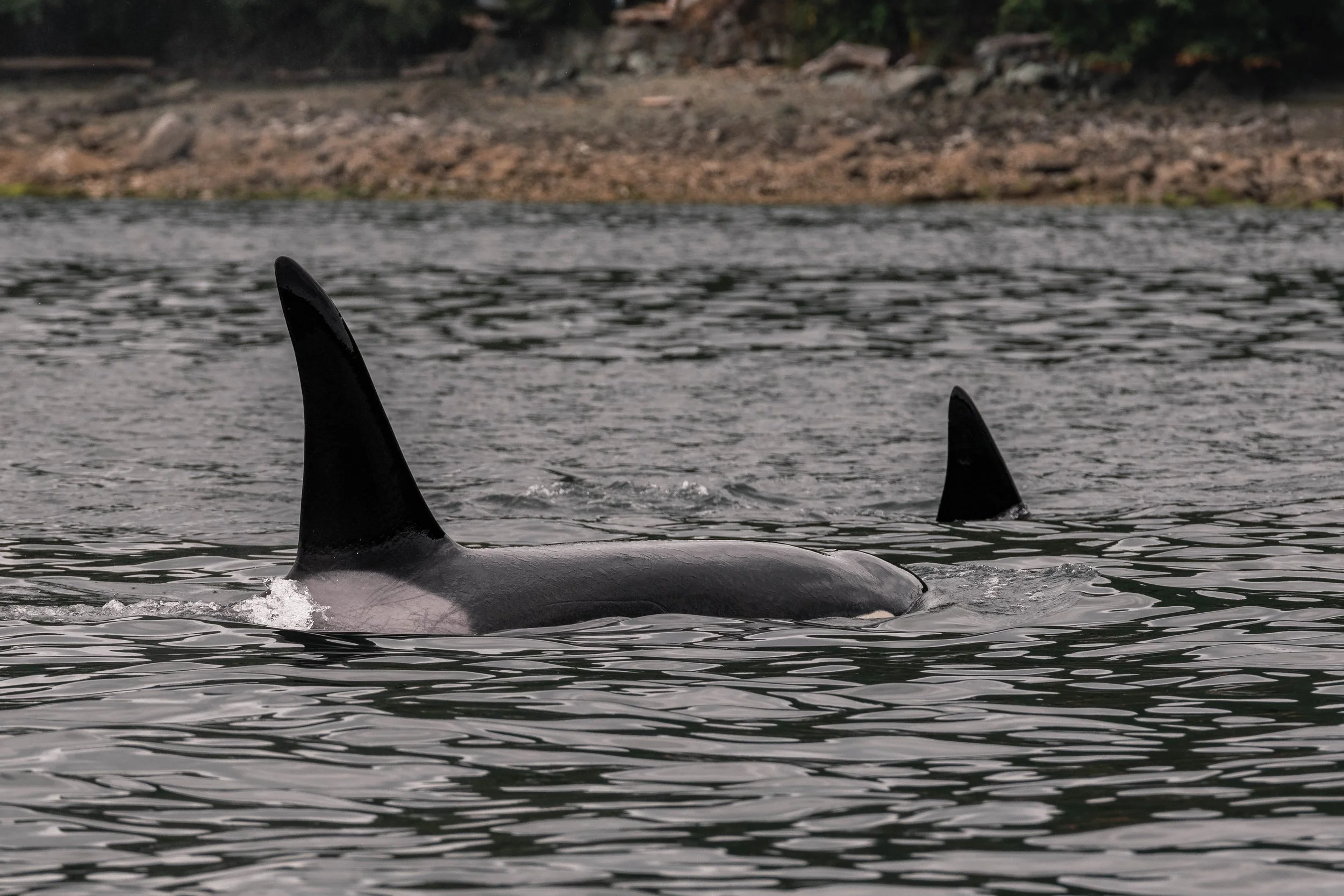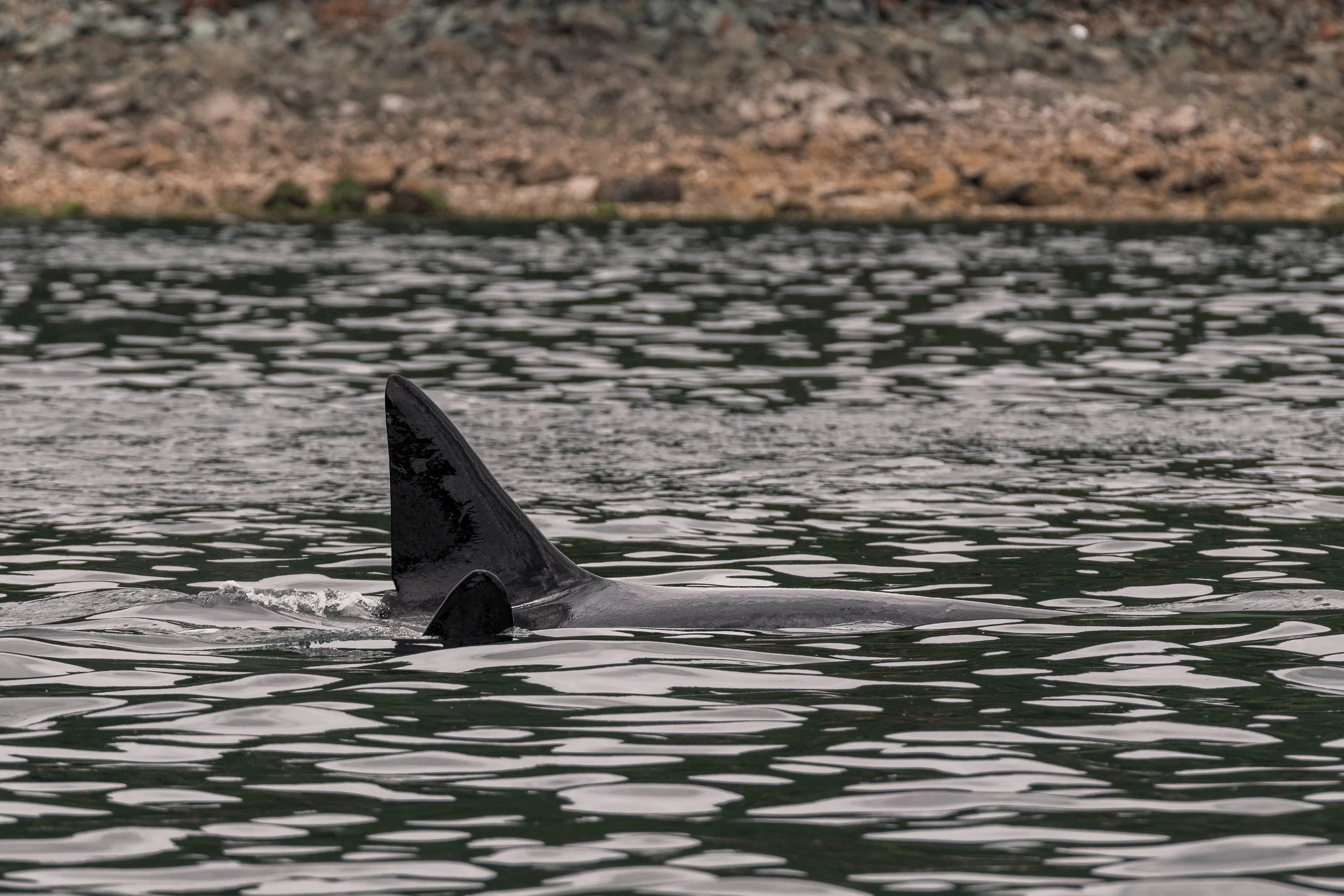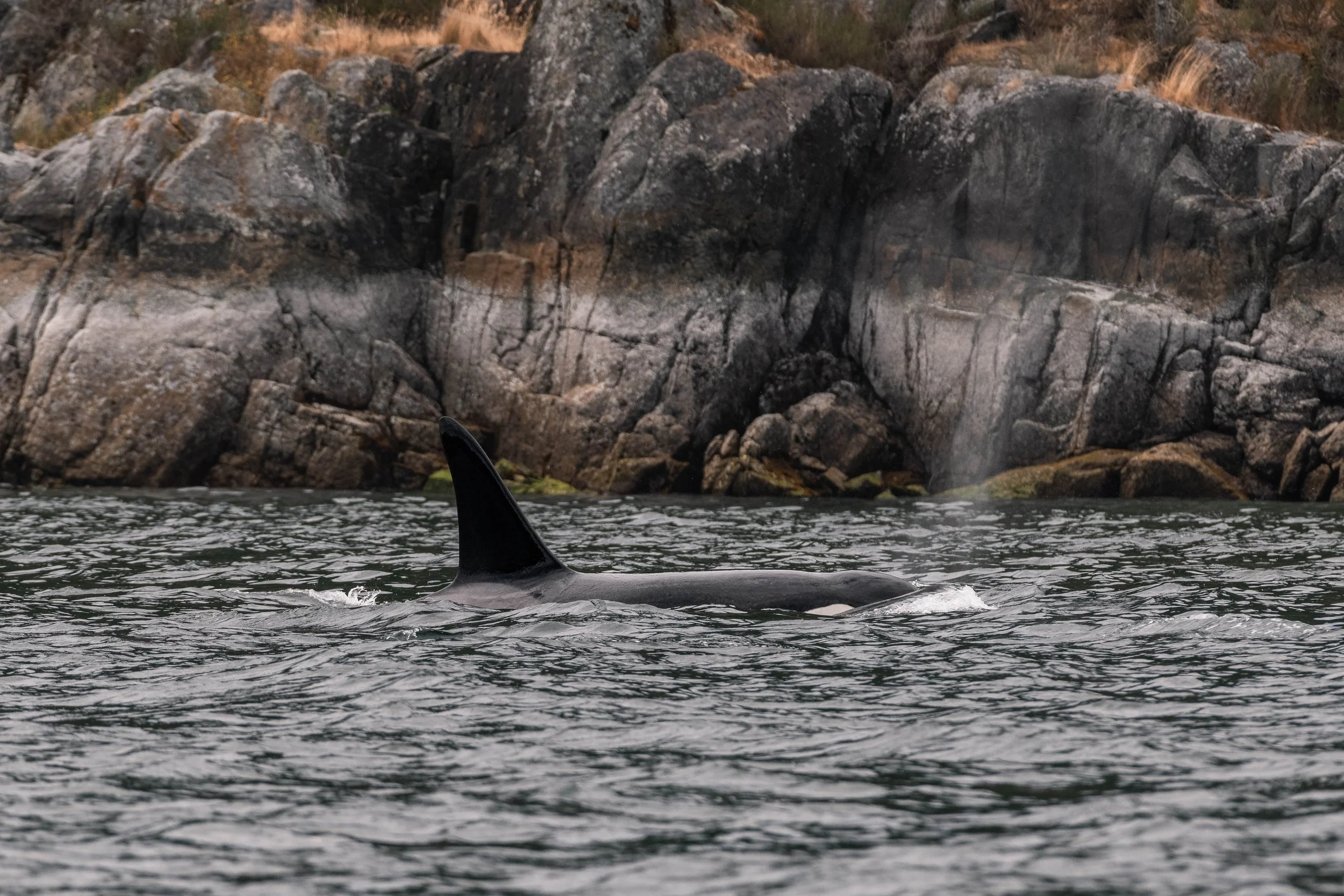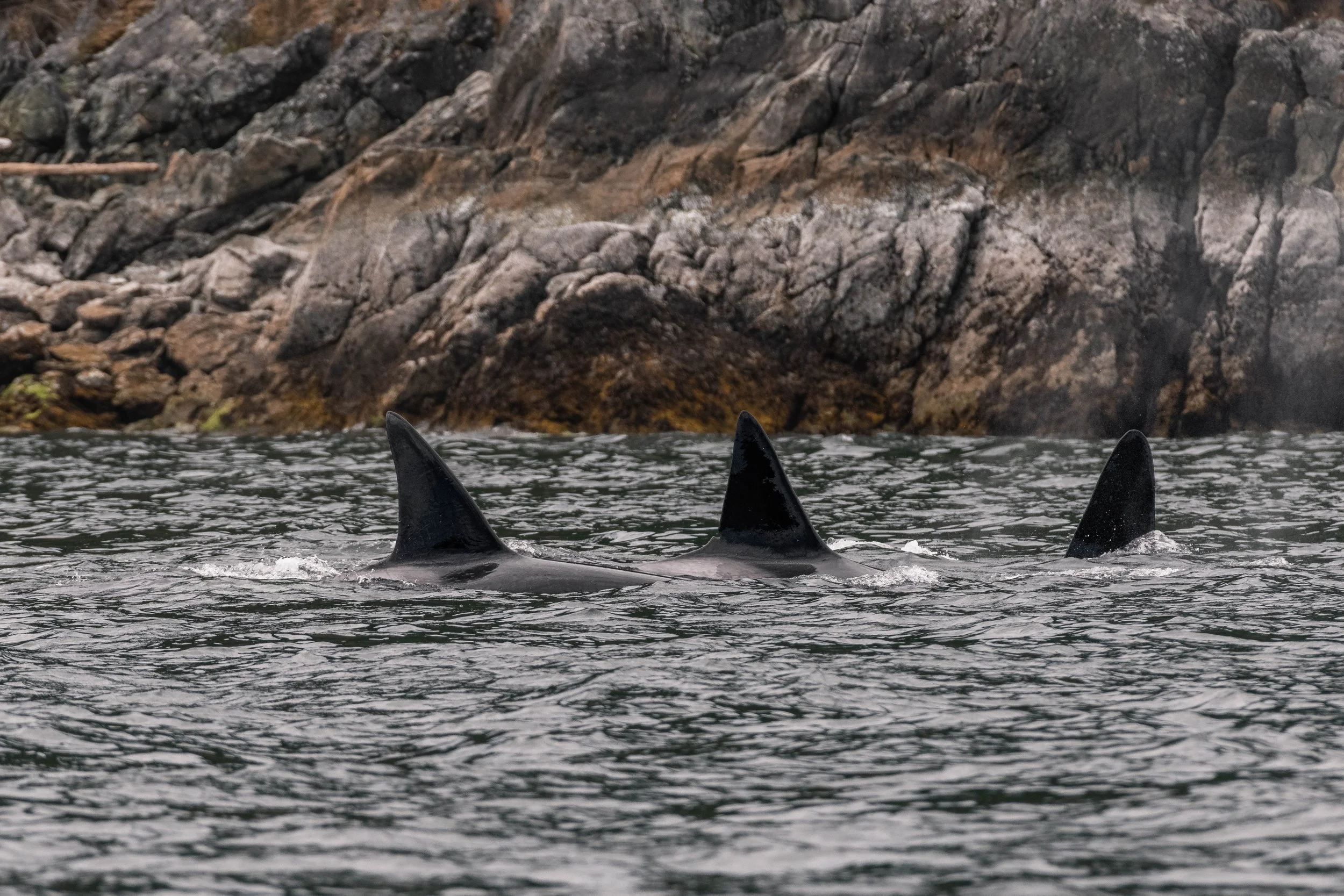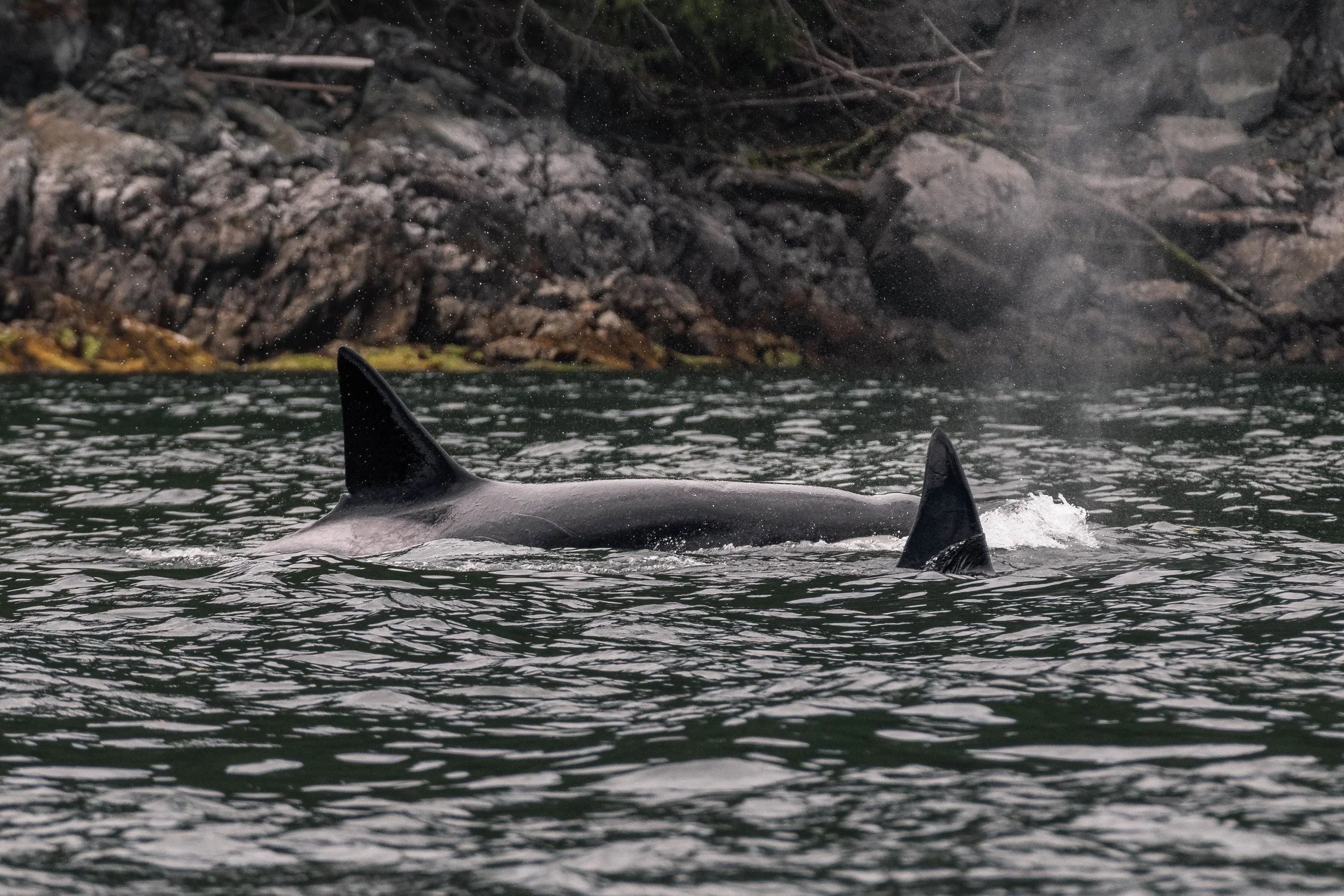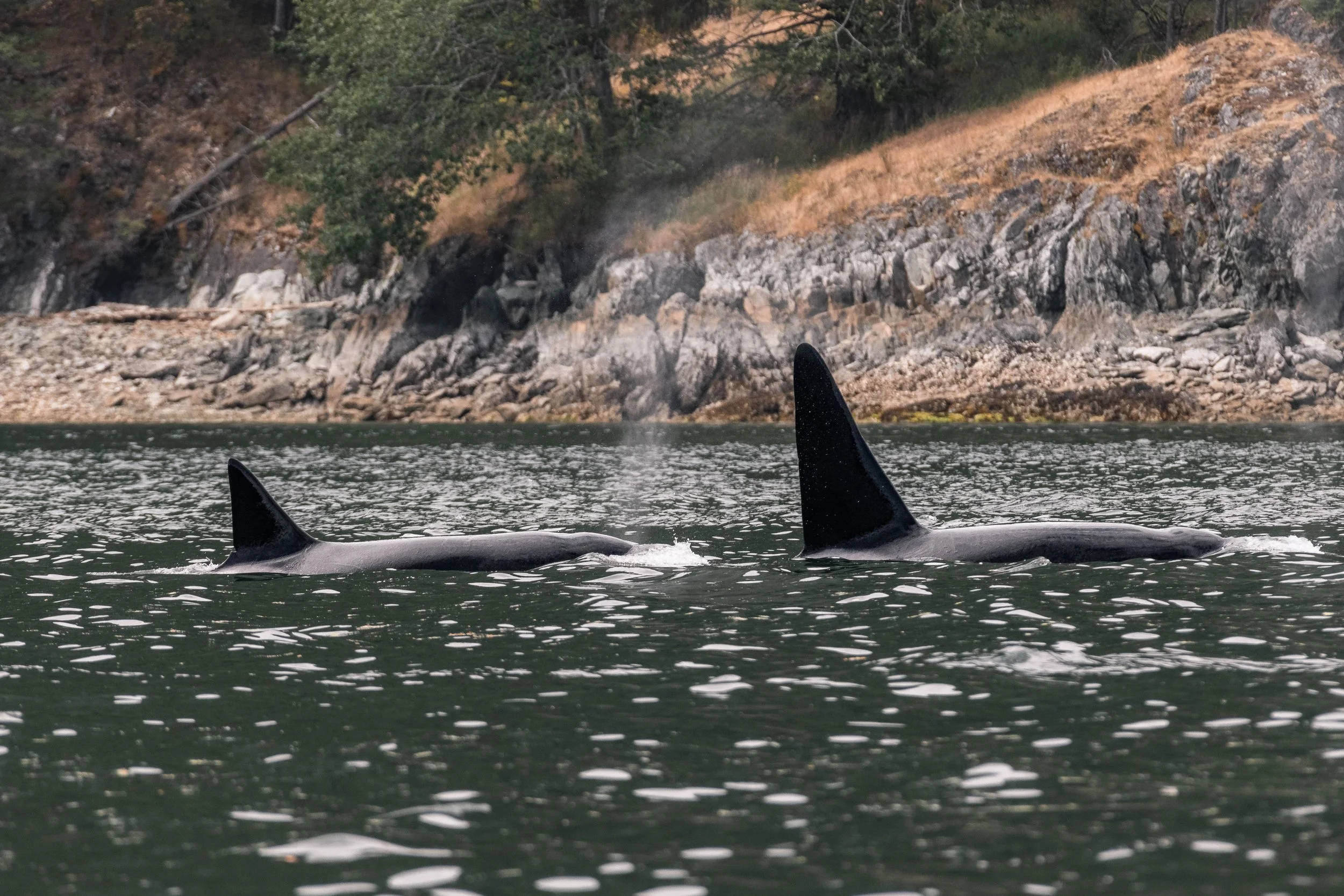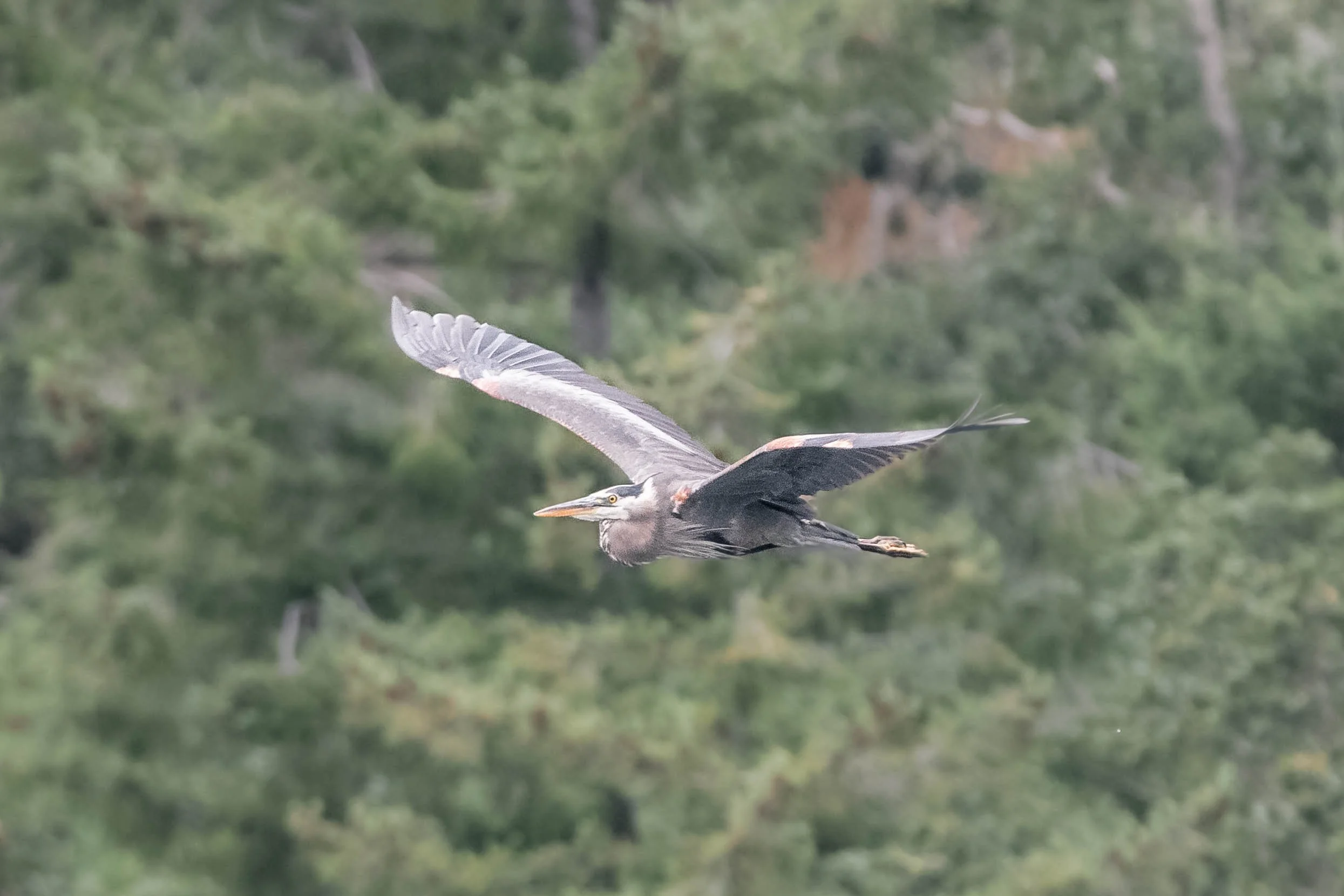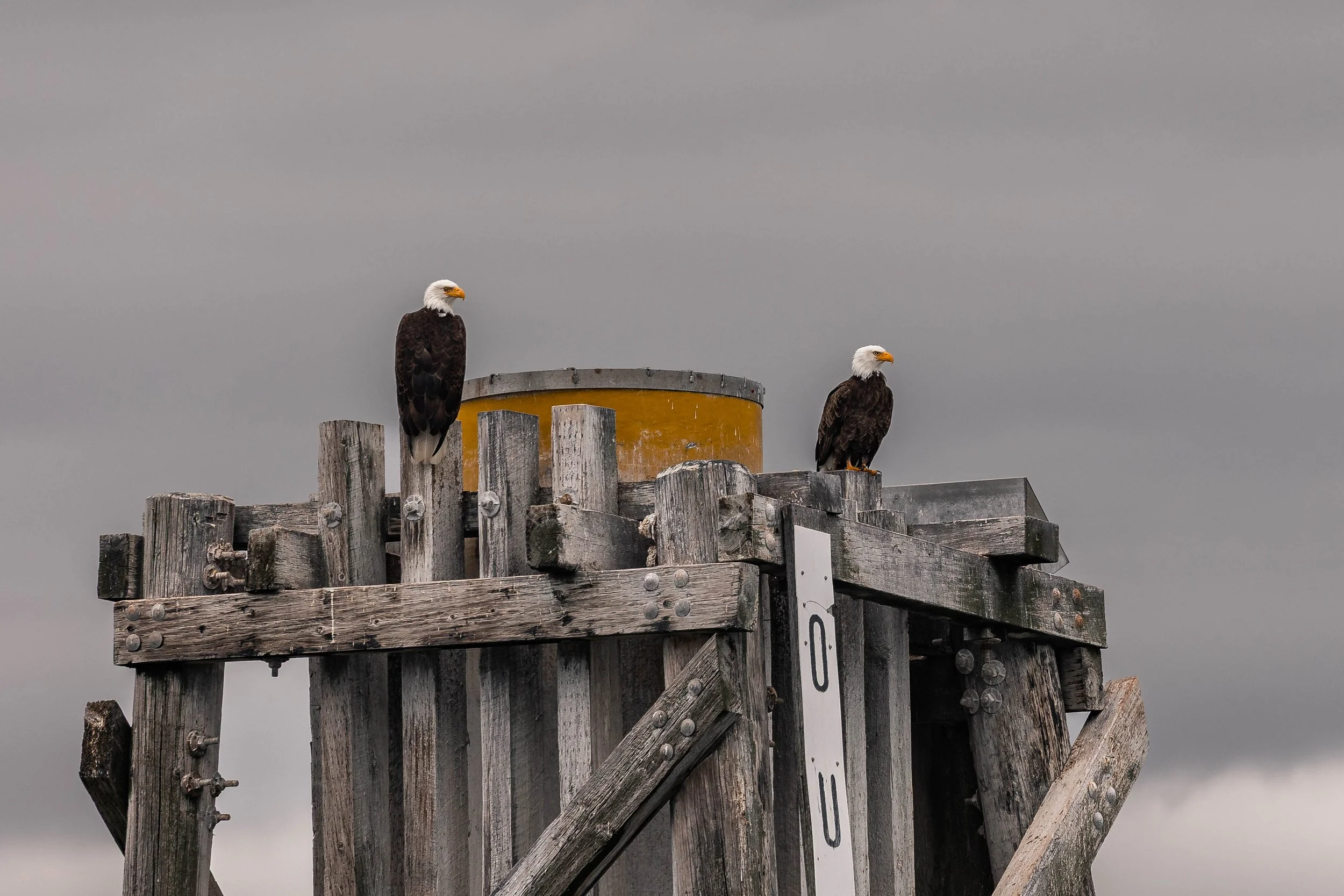July 14, 2025, 10:30 AM - Lunch time in Sansum Narrows
When you are searching for wild whales, you never know where the journey will take you. For today’s trip, our fleet split up to cover the various routes through the Southern Gulf Islands, going around both sides of Saltspring Island. We travelled southbound, crossing various waterways, and enjoyed the beautiful scenery. This is when we got lucky - so much so, we got double lucky, as our boats found multiple whale sightings at the same time! Our open vessel Keta and our semi-covered vessel Kula had spotted a pair of Humpbacks, and our open vessel Cascadia found a pod of Orca! The humpbacks were spotted at the mouth of Active Pass, whereas the orca were travelling through Sansum Narrows.
Keta and Kula started to snap photos of their pair, aiming to get shots of the humpbacks’ flukes and maybe their dorsals. Thankfully, these two cooperated and gave us a perfect catalogue shot for both of them. This pair was identified as Geometry (BCZ0338) and Honu (BCX1856). Geometry has a stunning, mostly white fluke with a couple of black markings, and Honu has a mostly black fluke with a bit of white markings. These two were fluking and diving as we watched them, travelling in a very classic humpback fashion. During the summer, our humpbacks are busily eating as much as they can in preparation for their breeding season. After travelling with the duo for a bit, our boats departed and started cruising over to join Cascadia with their orca.
At the same time, Cascadia started grabbing photos of their own. For orca, we typically use their dorsal fins to identify individuals, but we can also use their saddle patches (the grey area behind their dorsal fins) or their eyepatches (the white ovalar shapes on either side of their faces). These four were identified as the T069s:
T069 Komox ♀ (~1974)
T069C Kye ♂ (1995)
T069E Kodiak ♂ (2004)
T069F Kin ♂ (2010)
The T069s are a relatively uncommon pod to see on our trips, as they generally spend their time around Victoria and only come up towards Nanaimo briefly every year. During our encounter, these four were excitedly hunting for lunch. Orca hunts can vary dramatically in length, from only a few minutes to sometimes multiple hours long. Today, they were incredibly efficient and took down their prey in a few mere minutes! They were so efficient, in fact, that we didn’t even see what they hunted… we did see the aftermath, though, with T069C Kye at one point being spotted with a bit of ‘forbidden spaghetti’ (intestines) draped over his dorsal fin.
Hunting is a very important part of an orca’s life, as it is a very family-focused time. When prey is caught, the whales will dive and begin breaking the catch up so that every individual gets a taste - no one whale will get the whole catch to themselves. This helps to keep each member satiated until the next hunt. Once the meal is done, often the whales will celebrate with tail slapping, spyhopping, and breaching - just like Kye did today!
Launching himself up into the air, Kye showed off just how impressive a male orca’s pecs can be - up to an astonishing 6 ft in length, and 4 ft in length. In other words, their pec fins can be as long as their dorsal fins are tall, tall enough to tower over all of our Naturalists! Kin was also very excited and began breaching out of the water. While he isn’t as big as his brother (yet), it is always amazing to be able to see the entire body of these animals as they playfully break the surface of the water.
Once our time with the orca had concluded, we started heading back north. The trip wasn’t over, though - we were back into search mode, peeking around, looking for other wildlife to visit. Popping into some of the smaller waterways, we searched the coastlines for any pinnipeds that may be hauled out. We spotted a few Harbour Seals nestled up on the rocks, snoozing the day away. These little guys spend a huge portion of their days just resting, conserving their energy, and building their fat reserves. Up to 50% of a seal’s body mass is made of blubber, making these cute little pinnipeds very chunky!
We had one last stop in mind before heading back to the harbour, this time to see a feathered animal. We spotted an active Bald Eagle nest with an Eaglet high up at the top of the trees. Eaglets in the Salish Sea have begun to branch, or leave their nest and start preparing to fly regularly by jumping from branch to branch around their nests, flapping their wings and building up their muscles. Soon, these young birds will start venturing further and further out, and soon they will leave their nests behind, venturing into the world to find a mate of their own.
We departed once more and headed back north, once again passing the beautiful Southern Gulf Islands and continuing up through Dodd Narrows, making our way back to home port, and wrapping up an incredible double species day inside the islands!
Please enjoy these photos by Marine Naturalists Aly Kohlman, Jordan Robinson, and Hayleigh Hilbert!
Zipping down for a dive. Photo by Aly Kohlman.
Geometry’s fluke. Photo by Aly Kohlman.
Honu’s fluke. Photo by Jordan Robinson.
T069C Kye spyhopping, with his pecs visible above the water! Photo by Hayleigh Hilbert.
T069 Komox cruising by the shoreline. Photo by Hayleigh Hilbert.
T069C Kye surfacing, his big blow visible as it puffs up into the air. Photo by Hayleigh Hilbert.
T069C Kye beside his mother T069 Komox. Photo by Hayleigh Hilbert.
T069C Kye, T069 Komox, and T069F Kodiak. Photo by Hayleigh Hilbert.
T069C Kye with his eyepatch above the water. Photo by Hayleigh Hilbert.
T069C Kye’s wiggly dorsal fin. Photo by Aly Kohlman.
T069C Kye with his brother T069E Kodiak behind him. Photo by Aly Kohlman.
Flukes up! Photo by Aly Kohlman.
T069C Kye with intestines on his dorsal fin. Photo by Aly Kohlman.
T069E Kodiak and his mother T069 Komox. Photo by Aly Kohlman.
T069C Kye and his massive dorsal fin. Photo by Aly Kohlman.
T069 Komox. Photo by Aly Kohlman.
An excited tailslap! Photo by Aly Kohlman.
T069F Kin breaching with one of his brother’s (likely T069E Kodiak’s) tail slapping beside him. Photo by Aly Kohlman.
T069F Kin coming in for a landing. Photo by Aly Kohlman.
What beautiful form! Photo by Aly Kohlman.
T069 Komox and T069F Kin. Photo by Aly Kohlman.
T069E Kodiak. Photo by Aly Kohlman.
T069C Kye. Photo by Aly Kohlman.
T069F Kin, T069 Komox, and T069C Kye. Photo by Aly Kohlman.
T069 Komox and T069F Kin. Photo by Aly Kohlman.
A full family photo! T069E Kodiak, T069 Komox (dorsal tip, blow), T069C Kye, and T069F Kin. Photo by Aly Kohlman.
T069 Komox and her eldest son T069C Kye. Photo by Aly Kohlman.
A Great Blue Heron in flight. Photo by Aly Kohlman.
Two Bald Eagles perched up high. Photo by Hayleigh Hilbert.
A Bald Eagle parent at the tip of a branch, with its Eaglet nestled into its nest. Photo by Hayleigh Hilbert.
A mature Bald Eagle perched at the top of the tree. Photo by Hayleigh Hilbert.
Balancing carefully to keep their little toes dry. Photo by Hayleigh Hilbert.
Getting side-eyed from the Harbour Seals, with a tiny baby just out of the water. Photo by Hayleigh Hilbert.
Snoozing on the rocks. Photo by Jordan Robinson.

